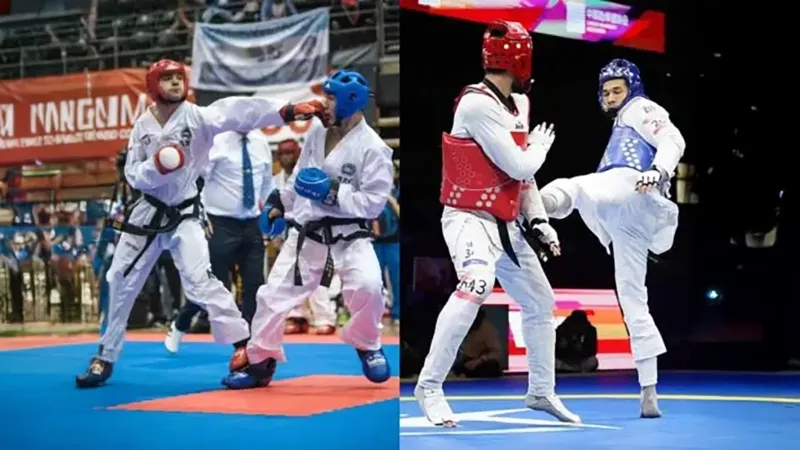
Origins and History
• ITF (International Taekwon-Do Federation): Founded in 1966 by Gen. Choi Hong Hi, ITF represents the traditional form of Taekwon-Do. It emphasizes martial effectiveness, self-defense, and moral culture. Patterns (Tuls), sparring, and breaking are practiced alongside philosophical study rooted in the Tenets of Taekwon-Do: Courtesy, Integrity, Perseverance, Self-Control, and Indomitable Spirit .
• WT (World Taekwondo): Established in 1973 as the World Taekwondo Federation (WTF), it later rebranded as WT. Its focus shifted toward sports competition, leading to Taekwondo’s recognition as an Olympic event in 2000. WT emphasizes athletic performance, speed, and electronic scoring in sparring.
Philosophy and Goals
• ITF: Aims to develop both the body and the mind. Students follow the Student Oath and the Tenets of Taekwon-Do, learning that martial arts training is inseparable from building character and moral responsibility .
• WT: While discipline and respect remain central, the philosophy is more competition-driven. The main goal is excelling in sport, with emphasis on winning matches under Olympic rules.
Patterns vs. Poomsae
• ITF: Students practice Tuls—sequences of movements combining offensive and defensive techniques. Each Tul embodies philosophical meaning and historical symbolism, connecting the practitioner with Korea’s heritage.
• WT: Students practice Poomsae, which are standardized forms designed primarily for competition and demonstration. While still symbolic, they are streamlined for scoring consistency in tournaments.
Techniques and Emphasis
• ITF: Known for a wide variety of kicks, including flying, jumping, and spinning techniques. Hand techniques, self-defense applications, and breaking are also central. The Encyclopedia of Taekwon-Do records detailed instructions for over 3,200 techniques, ensuring a complete martial system .
• WT: Techniques focus heavily on fast and powerful kicking, especially high and spinning kicks that score in Olympic competition. Hand techniques are limited in sparring and less emphasized in training compared to ITF.
Sparring Rules
• ITF: Sparring (Matsogi) includes both hand and foot techniques. Contact is controlled, and points are awarded for accuracy, control, and technique variety. Competitors use gloves and boots for protection, with emphasis on tactical combinations.
• WT: Olympic sparring (Kyorugi) uses electronic scoring systems, rewarding kicks to the torso and head. Punches to the torso are allowed but score less. Matches favor speed, precision, and strategy to maximize points under strict sport rules.
Training Culture
• ITF Dojang: Training blends traditional etiquette, self-defense, patterns, step-sparring, free sparring, theory, and breaking. Character development is as important as physical skill.
• WT Dojang: Training prioritizes athletic performance, physical conditioning, and competitive sparring. Many schools focus on preparing athletes for championships and Olympic pathways.
Conclusion
Both ITF and WT share a common origin but diverged in purpose.
• ITF preserves the traditional martial art, emphasizing philosophy, moral culture, and complete self-defense training.
• WT evolved into a dynamic sport recognized worldwide for its Olympic presence, focusing on athleticism and high-speed competition.
For students, the choice depends on goals: those seeking traditional martial discipline and philosophy may prefer ITF, while those interested in sports competition and Olympic pathways may lean toward WT.

